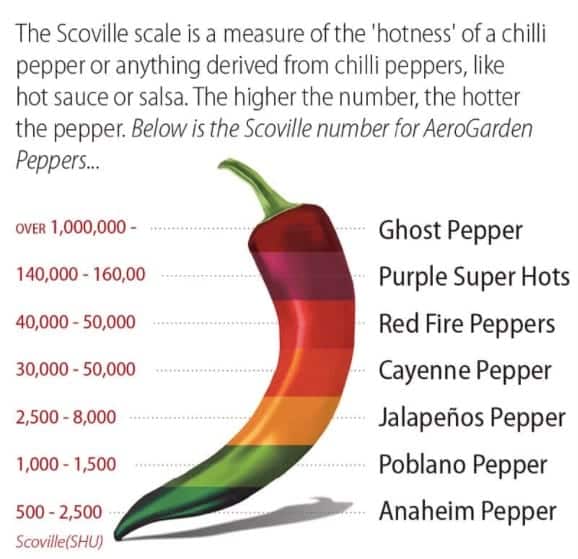For all you chili pepper and fiery food aficionados, it’s time to enter the Scovie Awards!
Spicy, hot chili peppers are also one of the coolest things in the fiery food world. Did you know that 6,000-year-old chili pepper seeds have been found in Peru and Mexico. It is believed that peppers are among the first plants domesticated by humankind.
Chili peppers derive their heat from capsaicin (“cap-SAY-uh-sin”). As mammals, we can feel the fiery heat of capsaicin, while birds are completely immune to it. Thus, birds, which consume the peppers and excrete the seeds, are instrumental in the proliferation of wild peppers.
What’s a Scovie?
The Scovie Awards is an event that celebrates the amazing chili pepper and the delicious fiery foods created from it. And when we say “chili pepper”, we mean the hundreds and maybe thousands of varieties of chili peppers that exist today around the world.
One way that chilis are described and differentiated are by their heat level. There is, in fact a definitive scale and process for ranking hotness, known as the Scoville scale. Thus the name, “The Scovie Awards”.
The Scoville Scale
In the early 1900s, pharmacist Wilbur Scoville derived a systematic test that would quantify a pepper’s heat. His method employed human tasters as Scoville believed the human tongue could detect lower levels of capsaicin than machines. His approach, The Scoville Organoleptic Test, uses multiple steps of increasing dilution to detect pepper hotness. A single unit of dilution is called a Scoville Heat Unit (SHU) and the test is final when no additional heat can be detected.
Today, the test is known as The Scoville Scale and also employs liquid chromatography to extract the capsaicin and derive the Scoville score. Chili aficionados argue that machine metrics can underestimate chili heat by 30%. The Scoville Scale is used to measure pepper heat as well as heat in foodstuffs that incorporate chilis.
Scoville Scores
So, what do the Scoville scores or SHU’s tell us about peppers? To give you an idea of ranking, bell peppers hold the bottom of the scale at 1-100 SHUs. Cayenne pepper measures at 30,000 – 50,000 SHU. At the hottest end of the Scoville scale, even spicier than the fiery Ghost Pepper, is the hottest pepper we know: The Carolina Reaper at 2.2 million SHU.

Hottest Part of a Chili
It’s not the seeds that hold the most heat. While many believe the seeds are the hottest part of a chili, it is actually the white pith near the seeds that is the spiciest part of a chili pepper. Also, the pepper part closest to the stem holds greater heat and a higher concentration of capsaicin.
Celebrating Fiery Foods
Many of our customers craft incredibly delicious – and spicy – foods from chili peppers. We’re excited to help showcase these products, through their labels and to see them judged by chili experts during the Scovie Awards in November. If you’d like to enter your product and compete in the Scovie Awards, you have until September 15, 2020 to do so. Scovie Award Entry Form


